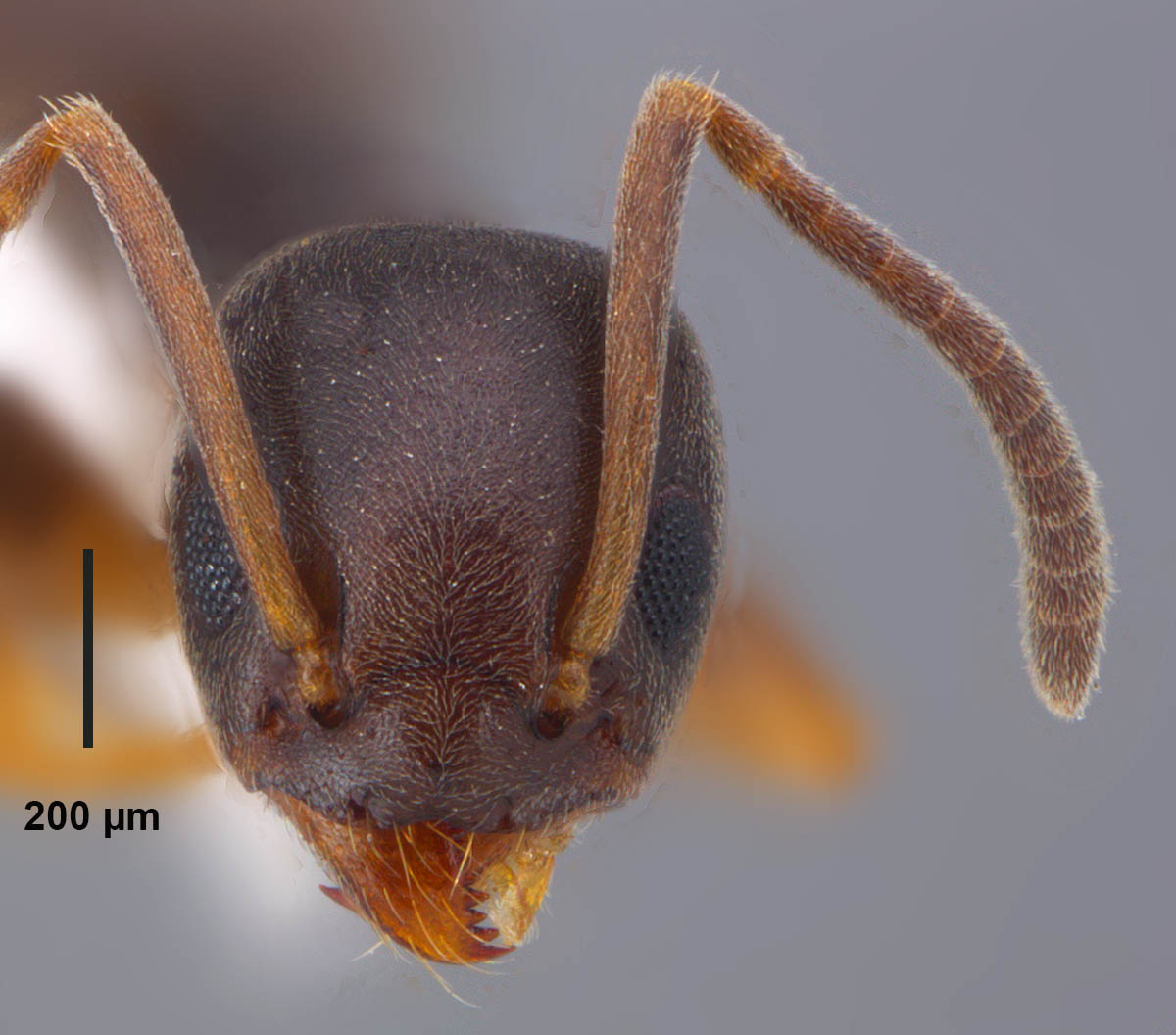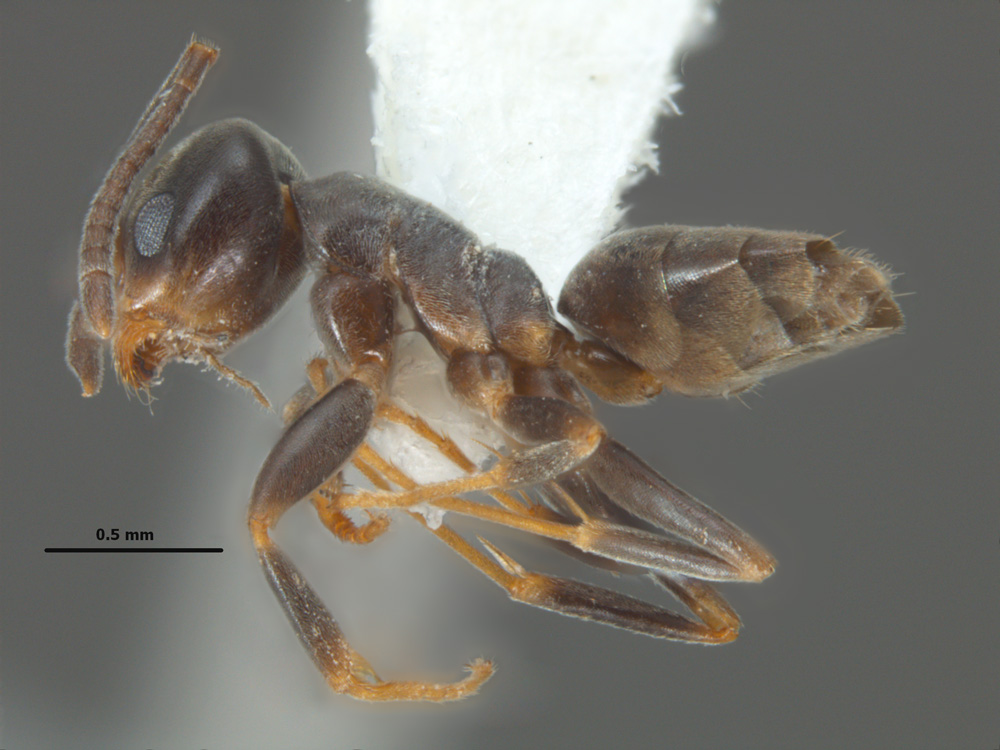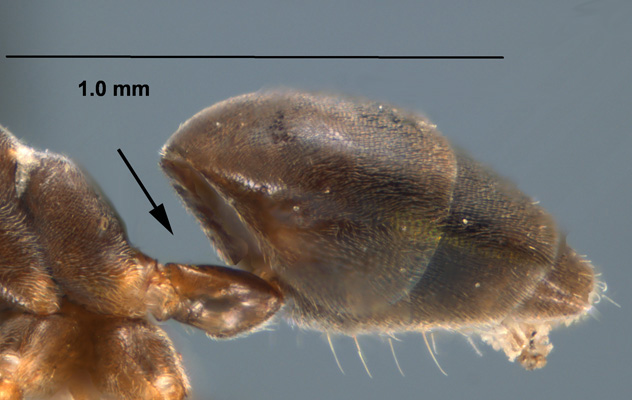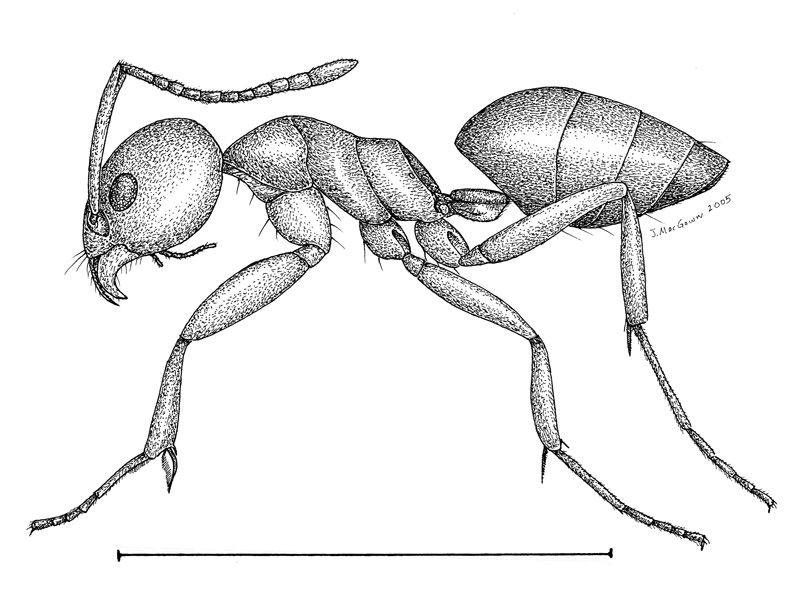Subfamily DOLICHODERINAE Authors: Joe A. MacGown |
||
Tapinoma sessile, full face view of worker (AR, Washington/Benton Co.) (photo by Joe A. MacGown) |
Tapinoma sessile, lateral view of worker (AR, Washington/Benton Co.) (photo by Joe A. MacGown) |
Tapinoma sessile, dorsal view of worker (AR, Washington/Benton Co.) (photo by Joe A. MacGown) |
Tapinoma sessile, full face view of worker (photo by Joe A. MacGown) |
Tapinoma sessile, profile view of worker (photo by Joe A. MacGown) |
Tapinoma sessile, profile view of worker with arrow pointing to the flattened petiole (photo by Joe A. MacGown) |
Introduction Identification Biology and Economic Importance Typically, nests are in the soil beneath rocks and stones, bricks, logs, boards or other objects on the ground, but they are also known to nest under the bark of stumps and logs, in plant cavities, insect galls, trash piles, in animal nests, under mulch in flower beds, in stacks of firewood, under shingles or siding, behind ivy or other vines on external walls, behind brick veneer, in wall voids, and in many other locations. Nests in the soil are generally indefinite and may be difficult to spot. This pest also has the habit of moving its nest site every few weeks, which can make control more challenging. Colony size is quite variable and may range from several hundred to many thousands of individuals. As with Argentine ants, colonies contain numerous reproductive queens. Also like the Argentine ant, different odorous house ant colonies do not attack one another, but can live in relative closeness in peace with one another. In Mississippi, mating usually occurs from early to mid May, while in more northern states, mating would typically occur later in the summer. Mating can take place in the nest itself between the males and their "sister" females (reproductive queens), or there may be nuptial flights with males and reproductives flying away from the nest to mate. In some cases, females leave the nest independently or travel with a small number of workers to aid them in new colony establishment. In natural habitats, T. sessile workers are noted for their love of honeydew produced by various insects such as scale insects, plant lice, mealybugs, and membracid planthoppers. They eat the honeydew as well as attend those insects to further promote honeydew production and protect them against attack by predators. Additionally, workers regularly feed on sweet plant secretions from the nectaries of flowers. Although their dietary favorites in the wild are sweets, they also feed on both live and dead insects and a variety of other things. In households, T. sessile feed on a wide variety of foods including both raw and cooked meats, vegetables, dairy products, pet foods, fruits, and because they are sweet-feeding ants, they are especially attracted to sugar, sweetened cereals, pastries, syrup, etc. As a result of their preference for sweets, odorous house ants will readily take sweet baits, especially liquid baits, and baits can be useful in their control. In homes, odorous house ants are most commonly found in the kitchen/pantry area, but they can occur anywhere in the house where there is an attractive food source, such as where pet food is stored. Because, these ants primarily nest outdoors, indoor infestations are likely to be linked to outdoor colonies. Foraging ants lay a chemical trail from the colony to the food source, and with a little patient effort, these trails can often be identified and followed back to the nesting site. Tapinoma sessile workers may be recognized by their foraging behavior; they usually travel in files or lines and are very active and fast. When excited or alarmed, workers can be observed moving around in an excited and erratic manner. Distribution Literature Cited MacGown, J. A. 2009. Pest Ants of the Southeastern United States. Online at: http://www.mississippientomologicalmuseum.org.msstate.edu/Researchtaxapages/Formicidaepages/faunal.lists Smith, M. R. 1965. House-infesting ants of the Eastern United States, their recognition, biology, and economic importance. United States Department of Agriculture, Technical Bulletin No. 1326: i-105. Links Wikipedia entry: http://en.wikipedia.org/wiki/Tapinoma_sessile MEM Publication on Odorous House and Argentine Ants. |
||









